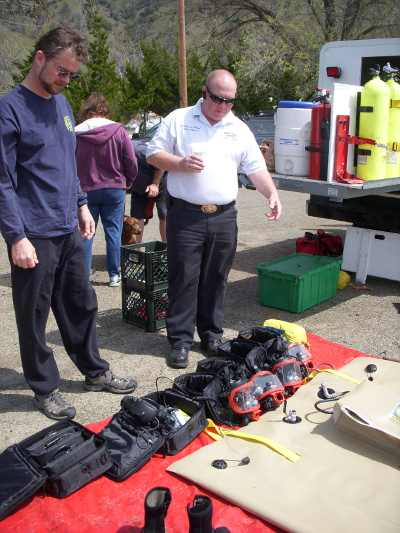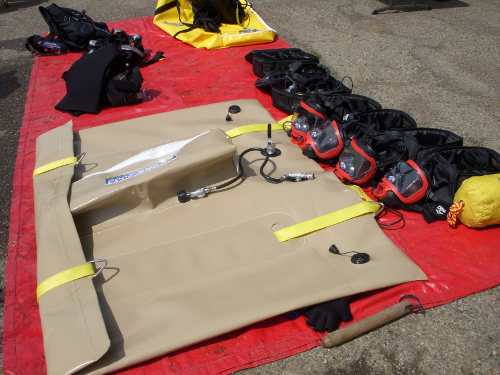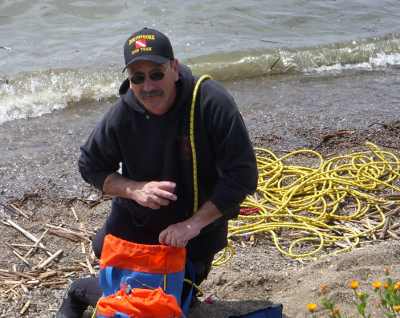- Elizabeth Larson
- Posted On
Judge grants change of venue motion in Navarro case
LAKEPORT, Calif. – A judge has granted a change of venue motion filed on behalf of a Kelseyville man accused of having sex with a young teenage girl, finding that pretrial publicity has tainted the jury pool, making it unlikely that the defendant would get a fair trial locally.
Derik Navarro, 40, is facing prosecution on 16 charges for his alleged sexual relationship that occurred from 2005 to 2006, beginning when the young woman was 14 years old. Of the charges, 14 are felonies and two are misdemeanors, according to court records.
“Here the court does conclude that there is a reasonable likelihood that a fair and impartial trial cannot be had in the county and accordingly the court orders the granting of the motion for a change of venue,” said retired Judge Robert Crone, noting that Navarro's case may be the first in which he's granted such a motion.
During the hearing, which lasted most of the morning, the defense argued that growing media coverage, along with public comments about the case by Sheriff Frank Rivero, had created an atmosphere in which Navarro was already considered guilty by many potential jurors.
The case has been ongoing since April 2007, when Navarro was fired from the Lake County Sheriff's Office and then arrested on the charges a week later, as Lake County News has reported.
The California Attorney General's Office is handling the case's prosecution because District Attorney Don Anderson has a conflict in the case due to having represented Navarro in an employment matter while a private attorney several years ago.
Last December, the Attorney General's Office reached an agreement with Navarro and his attorney, Mitchell Hauptman, in which Navarro would have served up to three months in jail in exchange for pleading guilty to one count of felony unlawful intercourse with a child under age 16, with 15 other charges to be dismissed.
Judge Andrew Blum rejected the agreement in January, despite the requests from the victim and her family that the agreement be approved in order to allow them to move forward with their lives.
In the Wednesday morning hearing before Crone, Hauptman argued for the change of venue, a motion with Senior Assistant Attorney General Dave Druliner did not oppose.
Hauptman, pointing out the duration the case has been working its way through the courts, said, “Up until last December it was relatively obscure.”
However, in the wake of the attempt to reach the plea agreement the case became a “circus,” he said.
The public did not support the plea agreement, “including our sheriff.” Rivero, Hauptman noted, stepped up and showed his disapproval “in unambiguous language.” At the time of the plea agreement, Rivero also had released a press statement on his opinions on the deal.
Hauptman said opinion about the case evolved into one of a peace officer getting a sweetheart deal and avoiding responsibility.
Citing case law, Hauptman said a confession in a small county offers no alternative but to change the venue.
“Here we have of course a plea bargain which in the public's mind is an admission of guilt,” he said, and there is no way to easily uncover that in pretrial questioning of jurors without exposing them to knowledge, and therefore prejudice, in the case.
He said a community opinion survey suggested that as many as one in three community members believe Navarro is guilty because of the plea agreement.
“There is no reasonable likelihood that Mr. Navarro can receive a fair trial by reason of the publicity,” said Hauptman.
In his response, Druliner offered support for the venue change.
“The history of the case is such that it is our opinion that the appropriate thing to do is to grant the motion, and we would urge the court to do that because we feel the legal standard has been met by the evidence,” Druliner said.
He said they do not want to risk appellate review in the case a venue change isn't granted, adding that the case already has been in the system for five years.
Expert explores the impacts of the press on the case
Publicity in the case has jumped significantly since the December plea agreement, and the only witness of the day, Dr. William Rountree, explained in detail his findings about the impact of the publicity, reviewing 27 articles written about the case from April 2007 up through last month.
Rountree also reviewed comments on those articles, with some comments suggesting Navarro should be shot or castrated, evidence of the kind of emotion the case has elicited from the community.
Prejudicial publicity doesn't always necessitate a change of venue, Rountree explained. “However, in this particular case, and under California case law, because we're talking about publicity of a plea agreement in a very small venue like Lake County, the line is fairly bright.”
With the assistance of the Renton, Wash.-based Pacific Market Research, Rountree and an associate conducted the research on the case, ultimately coming up with 300 interviews of randomly selected residents after starting with a database of 10,000 phone numbers in the county.
“In this case there was a fairly substantial recognition rate,” he said, with a high number of local residents – 58 percent of the 300 surveyed– recognizing the case.
Of that 58 percent, more than 50 percent responded that Navarro was probably guilty or definitely guilty of the charges against him, which during his questioning Hauptman said translated into about 33 percent of the county's eligible jurors.
Rountree and his associate analyzed a total of 27 articles on the case between April 2007 and March 2012. Of those articles, 15 were in the Lake County Record-Bee, seven in Lake County News and five in the Santa Rosa Press Democrat.
The comments in those articles also were analyzed, as Rountree said they often reflect community attitudes.
He said that there were nine to 10 stories during a 43-month period, and the remaining 17 or 18 stories were published after the announcement of the plea agreement in December. “The plea agreement spurred the news publications into writing more about the case.”
Rountree also noted, “The potential that the jury pool was aware of the plea agreement as a confession definitely complicates the jury selection process.”
The articles included inflammatory information including charges and references to the failed plea agreement, a second victim that initially was reported and an internal investigation by the sheriff's office, he said.
Another factor was Rivero's statements about the case, Rountree explained.
“Sheriff Rivero's statements about the plea agreement being a travesty of justice was something that was extensively covered in the news media and also garnered reactions in the comments sections to the news articles,” said Rountree.
He said social science research has looked at the enduring impression of both factual and emotional coverage of an issue. Anything that can be read as a defendant's admission of guilt is likely to endure.
Rountree said the reaction to the case arises, in part, from the circumstances. “Sex crimes against children are among the most severe crimes in terms of public reaction,” he said.
Although there have been “blips” of positive information about Navarro, Rountree said the coverage has been overwhelmingly negative.
As for the pretrial coverage by the media, to the extent that the pretrial publicity is leading people to prejudge the case and Navarro, “It's coming from the coverage of the Record-Bee,” not the Press Democrat or Lake County News, Rountree said.
He said that his study showed that 80 percent of people who know about plea agreement think Navarro is guilty.
Rountree also said he believed there was a “reasonable likelihood” that Navarro wouldn't get a fair trial in Lake County.
He said there are other options rather than a change of venue, including delay, a potential gag order – which he said isn't likely to go forward – and more exacting juror questioning. There also could be a bench trial; in other words, a judge, not a jury, would decide the case.
With 80 percent of the people surveyed who were aware of the plea agreement believing Navarro was guilty, Druliner asked if Rountree would question the credibility of the remaining 20 percent. Rountree said yes.
Rountree said Rivero's press release and statements about the plea agreement being a “travesty of justice” got a lot of attention.
“That was one of the major factors that led to politicizing this case to the extent that moving it out of Lake County became something that's part of our recommendation for change of venue,” he said.
Druliner also asked Rountree about Rivero's attempt at ex parte communications about the case with Judge Blum. Rountree said he was aware of it but couldn't testify on the issue.
In his closing arguments, Hauptman explained that the plea agreement and the resulting publicity had brought the case to the point of needing a change of venue, which he believed was the only workable option.
“Here there are matters that really are important, that really will affect the outcome of a trial, and as a matter of course there's simply no way if there is a guilty verdict for Mr. Navarro to know the result was not tainted,” Hauptman said.
Druliner agreed with the motion's necessity.
“The people are satisfied that denying the motion at this point and going to jury selection – actual boots on the ground jury selection in this courtroom or in this courthouse – will be inadequate under the circumstances, given the history of the case and pretrial publicity,” he said.
Crone found that the statute, the evidence, the prosecution and defense all seemed to be in agreement, and in his overall evaluation of the case he felt moving Navarro's trial out of Lake County was the only option.
He said he tried to think of other remedial solutions. “There isn't any practical way from the evidence that's been presented,” he said, adding he found Rountree's testimony, research and methodology thorough and convincing.
Crone suggested that the trial should be moved to a county far enough away where press coverage won't impact the jury pool.
The case will be brought back for further proceedings in order to begin the process of finding a court to hear it.
Email Elizabeth Larson at This email address is being protected from spambots. You need JavaScript enabled to view it. .

 How to resolve AdBlock issue?
How to resolve AdBlock issue? 



























